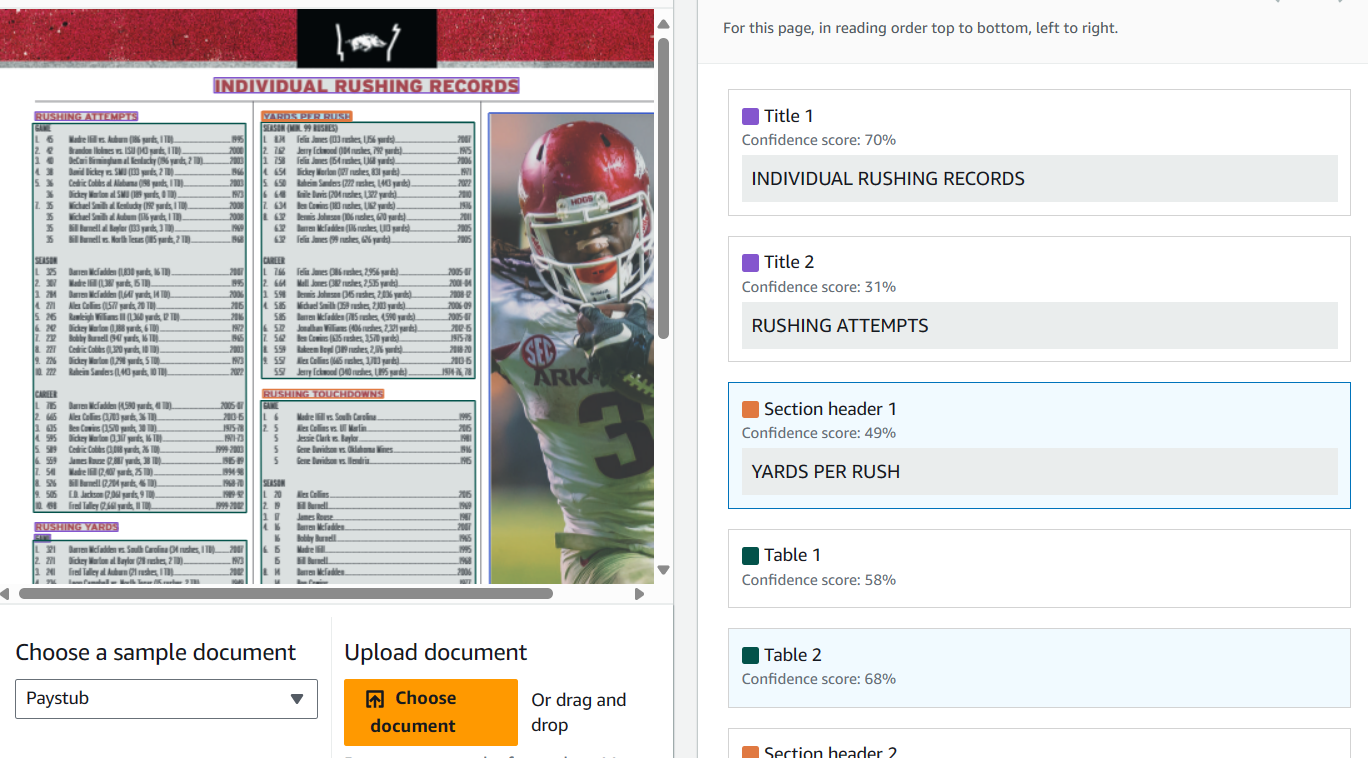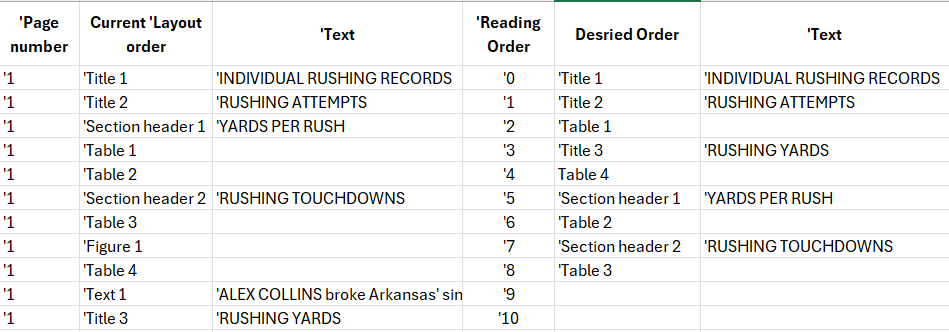Background: I am using Textract Analyze document API to detect Layout response objects in a PDF page. The page has Page Headers, Title, Sub-headers, tables, figures, and text. The page is divided into 3 vertical columns, each having some text and tables.
Challenge: I have 2 challenges:
- Upon using the Layout option from Analyze document API, Textract can correctly identify about 90% of response objects. Some Sub-headers are identified as Text, and sometimes sub-headers are identified as a part of the Table. How can I train my model to identify the response objects correctly?
- The order in which these Layout response objects are being presented is completely wrong. Eg. I first want all the response objects of column 1 to be presented followed by that of Column 2 and so on. Is there a way by which I can train the Textract to first identify and print the objects from Column 1 then followed by Column 2?
I am attaching some snippets to better understand my challenges:


 AWS OFFICIALAktualisiert vor 3 Jahren
AWS OFFICIALAktualisiert vor 3 Jahren AWS OFFICIALAktualisiert vor einem Jahr
AWS OFFICIALAktualisiert vor einem Jahr AWS OFFICIALAktualisiert vor 3 Jahren
AWS OFFICIALAktualisiert vor 3 Jahren

Thanks for your answer. Yes, I have been trying that, using bounding boxes to identify the x-min and y-min of response objects and then trying to devise a way to order them. But, the challenge is even using the x-min coordinate, I am not able to differentiate which response objects fall in Column 1, Column 2, or Column 3 of the page. In the output, I have to first order all the objects of column 1, with an increasing value of y-min, followed by that of column 2, and so on. Is there any way or algorithm you can think of to help me achieve this?